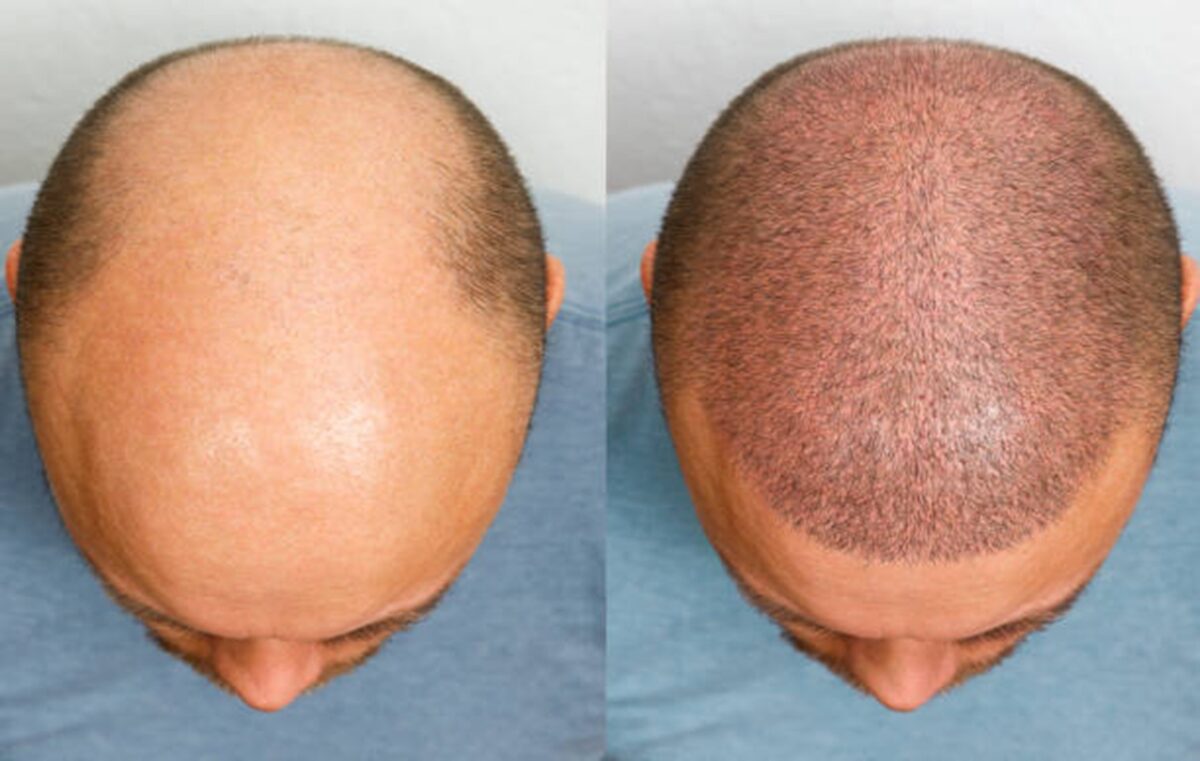Crown Hair Transplants: A Permanent Fix for Bald Spots

Introduction
Hair loss is a common issue faced by millions of people across the globe. One of the most frustrating forms of hair loss occurs on the crown, the circular region on the back of the head. Bald spots on the crown can be particularly noticeable, affecting one’s confidence and self-esteem. If you’re struggling with thinning or balding in this area, there’s good news: hair transplant crown procedures offer a permanent solution for restoring lost hair. Unlike temporary fixes or medications that only slow down hair loss, crown hair transplants provide long-term results, making it an ideal choice for many suffering from this issue.
This article will delve into the intricacies of crown hair transplants, explaining why they are an effective solution for bald spots and how they differ from other treatments. We will also cover the benefits, procedure, and aftercare tips to help you understand the full scope of this transformative treatment.
Why Balding on the Crown Happens
Before we explore hair transplant solutions, it’s important to understand why balding occurs on the crown. Hair loss in this region is primarily due to androgenetic alopecia, also known as male or female pattern baldness. This type of hair loss is influenced by genetics and hormones, specifically dihydrotestosterone (DHT), which affects hair follicles, causing them to shrink over time. This leads to thinner hair strands and, eventually, bald spots.
For men, the crown is often one of the first places to show signs of hair thinning or balding. Women may experience thinning across the entire scalp, but the crown is often affected in later stages. Medications, stress, poor diet, and underlying health conditions can also accelerate hair loss, but genetics remains the most common factor.
What Is a Crown Hair Transplant?
A hair transplant crown procedure is a specialized form of hair restoration focused on the crown area of the scalp. During this procedure, healthy hair follicles are harvested from the donor area, usually the back or sides of the head, and transplanted to the bald or thinning crown region. Since these donor follicles are resistant to the effects of DHT, they will continue to grow naturally in the transplanted area, providing a permanent solution to crown balding.
Hair transplants are typically performed using two primary techniques:
- Follicular Unit Transplantation (FUT): This method involves removing a strip of scalp from the donor area and dissecting it into individual follicular units before transplanting them into the crown. While FUT leaves a linear scar, it allows for the transplantation of a larger number of follicles in a single session.
- Follicular Unit Extraction (FUE): In this method, individual hair follicles are harvested one by one from the donor area and implanted into the crown. FUE is less invasive and leaves no visible scarring, making it a popular choice for those who prefer a minimally invasive approach.
Both methods have proven to be effective, and the choice of procedure depends on the patient’s specific needs, scalp condition, and desired results.
Benefits of Crown Hair Transplants
Crown hair transplants offer several key advantages, making them an attractive option for those suffering from balding or thinning on the crown. Here are some of the most compelling benefits:
1. Permanent Results
Unlike temporary solutions such as wigs, toupees, or hair concealers, a crown hair transplant offers a permanent solution. The transplanted hair follicles are genetically resistant to hair loss, meaning they continue to grow in the crown area long after the procedure, offering a lifetime of natural hair growth.
2. Natural Appearance
When performed by an experienced surgeon, crown hair transplants provide highly natural results. The transplanted hair grows and behaves like your existing hair, blending seamlessly with the surrounding hair. This makes it nearly impossible for others to notice that you’ve undergone a hair restoration procedure.
3. Boost in Confidence
Bald spots on the crown can be particularly noticeable, especially when viewed from behind or above. A crown hair transplant can effectively restore a full head of hair, enhancing your appearance and giving you the confidence you may have lost due to balding.
4. Low Maintenance
Once the transplanted hair starts to grow, it requires no special care. You can treat it like your natural hair—washing, styling, and even cutting it as usual. This low-maintenance aspect makes crown hair transplants a hassle-free solution for long-term hair restoration.
5. Minimal Scarring
For those who opt for the FUE method, minimal to no visible scarring is a significant advantage. Since individual follicles are extracted and implanted, the tiny incisions made during the procedure heal quickly, leaving no lasting marks.
The Crown Hair Transplant Procedure: Step by Step
Understanding the process of a hair transplant crown can help ease any anxiety or apprehensions you might have. The following steps outline a typical crown hair transplant procedure:
1. Consultation and Assessment
Before the procedure, you’ll undergo a thorough consultation with your surgeon. During this meeting, the surgeon will assess your hair loss pattern, evaluate the donor area, and discuss your desired results. This step is crucial in determining the number of grafts required and the best method (FUT or FUE) for your specific case.
2. Preparing the Donor Area
On the day of the procedure, the donor area (usually the back or sides of the head) is shaved, cleaned, and numbed with a local anesthetic. The surgeon will then proceed with extracting the donor hair follicles using either the FUT or FUE method.
3. Transplanting the Grafts
Once the donor follicles are harvested, the surgeon will create tiny incisions in the crown area where the hair will be transplanted. Each follicle is carefully implanted into these incisions, ensuring the proper angle, depth, and direction for natural hair growth. This meticulous process requires precision and skill to achieve the best possible outcome.
4. Post-Procedure Care
After the procedure, you will be given detailed instructions on how to care for your scalp. You may experience some mild swelling or discomfort in the donor and recipient areas, but these symptoms typically subside within a few days. Your surgeon will also prescribe medications to prevent infection and promote healing.
Recovery and Results
The recovery time for a crown hair transplant is relatively quick, with most patients able to resume normal activities within a week. However, it’s important to avoid strenuous exercise, direct sunlight, and swimming for a few weeks to allow proper healing.
In the weeks following the procedure, the transplanted hair may fall out—this is a normal part of the process called “shock loss.” New hair growth will begin in the following months, with noticeable improvements around the 4-6 month mark. Full results typically take about 12 months to become visible, giving you a fuller, thicker crown of hair.
Is a Crown Hair Transplant Right for You?
Crown hair transplants are an excellent option for those with significant thinning or balding in the crown area. However, they may not be suitable for everyone. If you’re in the early stages of hair loss, other treatments like medications or lifestyle changes may be recommended first. It’s also essential to have enough healthy donor hair to ensure successful transplantation.
A consultation with a qualified hair transplant surgeon will help determine if this procedure is the right choice for you based on your hair loss pattern, overall health, and aesthetic goals.
For More Information:
Conclusion
A hair transplant crown procedure offers a permanent and effective solution for those suffering from bald spots on the crown. With advancements in hair restoration techniques, you can achieve natural-looking, long-lasting results that will restore your hair and confidence. Whether you opt for FUT or FUE, working with a skilled surgeon is the key to a successful outcome.
If you’re tired of struggling with bald spots and want a reliable, low-maintenance solution, a crown hair transplant could be the life-changing treatment you’ve been searching for. With proper care and a bit of patience, you’ll soon enjoy a fuller, healthier head of hair.
Visit our website : Merton Clinic










